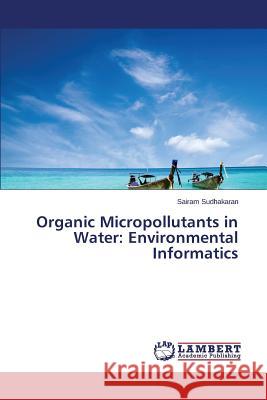Organic Micropollutants in Water: Environmental Informatics » książka
Organic Micropollutants in Water: Environmental Informatics
ISBN-13: 9783659608803 / Angielski / Miękka / 2014 / 160 str.
The presence of organic micropollutants (OMPs) such as endocrine disruptors and certain pharmaceuticals in water is of great environmental concern. OMPs are included in the priority list of contaminants in several government directorate frameworks. The low levels of OMPs concentration (ng/L to ug/L) force the use of sophisticated analytical instruments. Although, the techniques to detect OMPs are progressing, the focus of current research is only on limited, important OMPs due to high amount of time, cost and effort involved in analyzing them. Alternatively, quantitative structure activity relationship (QSAR) models help to screen processes and propose appropriate options without considerable experimental effort. QSAR models are well-established in regulatory bodies as a method to screen toxic chemicals.The goal of this research was to develop QSAR models for OMPs removal by oxidation. Apart from the QSAR models, a decision support system (DSS) based on multi-criteria analysis (MCA) involving socio-economic-technical and sustainability aspects was developed. Also, a hybrid of different water treatment processes was studied to propose a sustainable water treatment train."
The presence of organic micropollutants (OMPs) such as endocrine disruptors and certain pharmaceuticals in water is of great environmental concern. OMPs are included in the priority list of contaminants in several government directorate frameworks. The low levels of OMPs concentration (ng/L to µg/L) force the use of sophisticated analytical instruments. Although, the techniques to detect OMPs are progressing, the focus of current research is only on limited, important OMPs due to high amount of time, cost and effort involved in analyzing them. Alternatively, quantitative structure activity relationship (QSAR) models help to screen processes and propose appropriate options without considerable experimental effort. QSAR models are well-established in regulatory bodies as a method to screen toxic chemicals.The goal of this research was to develop QSAR models for OMPs removal by oxidation. Apart from the QSAR models, a decision support system (DSS) based on multi-criteria analysis (MCA) involving socio-economic-technical and sustainability aspects was developed. Also, a hybrid of different water treatment processes was studied to propose a sustainable water treatment train.











